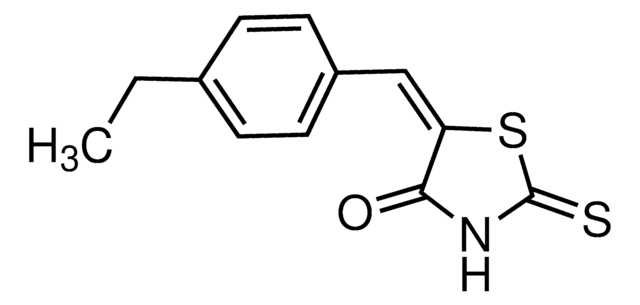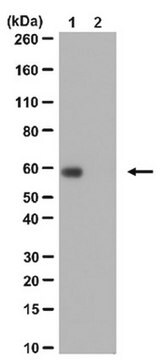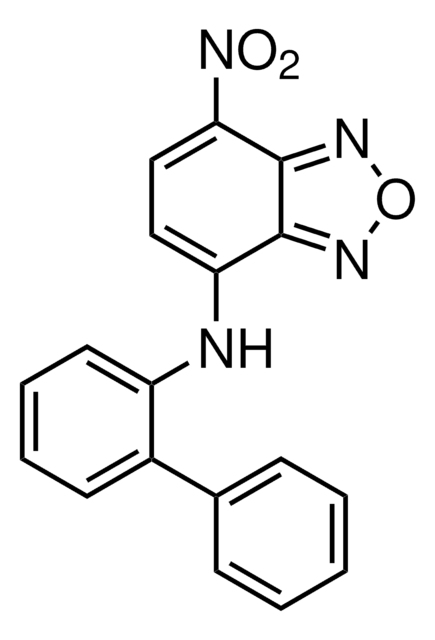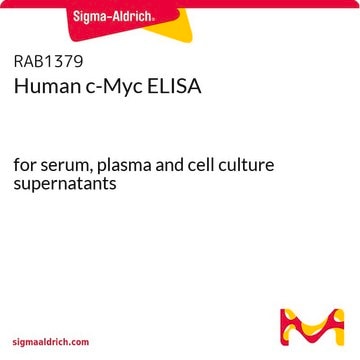475956
c-Myc Inhibitor
The c-Myc Inhibitor, also referenced under CAS 403811-55-2, controls the biological activity of c-Myc.
Synonym(s):
c-Myc Inhibitor, 10058-F4, ( Z,E)-5-(4-Ethylbenzylidine)-2-thioxothiazolidin-4-one, 10058-F4, (Z,E)-5-(4-Ethylbenzylidine)-2-thioxothiazolidin-4-one
About This Item
Recommended Products
Quality Level
assay
≥95% (sum of two isomers, HPLC)
form
solid
manufacturer/tradename
Calbiochem®
storage condition
OK to freeze
protect from light
color
yellow
solubility
DMSO: 200 mg/mL
shipped in
ambient
storage temp.
2-8°C
InChI
1S/C12H11NOS2/c1-2-8-3-5-9(6-4-8)7-10-11(14)13-12(15)16-10/h3-7H,2H2,1H3,(H,13,14,15)/b10-7+
InChI key
SVXDHPADAXBMFB-JXMROGBWSA-N
General description
Biochem/physiol Actions
c-Myc
Packaging
Warning
Reconstitution
Other Notes
Legal Information
signalword
Warning
hcodes
Hazard Classifications
Eye Irrit. 2 - Skin Sens. 1
Storage Class
11 - Combustible Solids
wgk_germany
WGK 3
flash_point_f
Not applicable
flash_point_c
Not applicable
Certificates of Analysis (COA)
Search for Certificates of Analysis (COA) by entering the products Lot/Batch Number. Lot and Batch Numbers can be found on a product’s label following the words ‘Lot’ or ‘Batch’.
Already Own This Product?
Find documentation for the products that you have recently purchased in the Document Library.
Customers Also Viewed
Our team of scientists has experience in all areas of research including Life Science, Material Science, Chemical Synthesis, Chromatography, Analytical and many others.
Contact Technical Service









